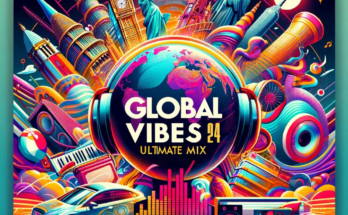Latin music has experienced a remarkable rise in popularity in recent years, with artists like Shakira, J Balvin, and Bad Bunny dominating the charts and capturing the attention of audiences worldwide. This blog post will delve into the history of Latin music, tracing its early beginnings to its current success. Latin music has its roots in the Caribbean and Latin America, drawing influences from African, European, and indigenous cultures. Over the years, it has evolved and diversified, giving rise to various genres and styles that have captivated listeners around the globe.
Key Takeaways
- Latin music has risen to global popularity in recent years.
- The birth of Latin music can be traced back to the 1940s and 1950s.
- The 1960s and 1970s saw a Latin music explosion, with many iconic artists emerging.
- The 1980s and 1990s brought a Latin music invasion, with crossover hits and mainstream success.
- The 2000s marked a Latin music renaissance, with new artists and collaborations pushing the genre forward.
The Early Years: The Birth of Latin Music in the 1940s and 1950s
The birth of Latin music can be traced back to the 1940s and 1950s when genres like mambo, cha-cha-cha, and bolero emerged. These genres were characterized by their infectious rhythms and lively melodies, which were heavily influenced by Afro-Cuban music. Artists like Tito Puente and Celia Cruz played a pivotal role in popularizing these genres and bringing them to a wider audience.
During this time, Latin music began to gain recognition beyond its traditional boundaries. It found its way into mainstream American culture, with songs like “Babalu” by Desi Arnaz becoming hits on the Billboard charts. The popularity of Latin music continued to grow throughout the 1950s, setting the stage for the golden era that was to come.
The Golden Era: The 1960s and 1970s Latin Music Explosion
The 1960s and 1970s marked a golden era for Latin music, with the emergence of salsa, Latin jazz, and other genres. Salsa, in particular, became a global phenomenon, blending elements of Afro-Cuban music with jazz and rock influences. Artists like Fania All-Stars, Willie Colón, and Rubén Blades became household names, and their music resonated with audiences around the world.
Latin music during this period was characterized by its infectious rhythms, intricate arrangements, and socially conscious lyrics. It became a powerful tool for expressing cultural identity and addressing social issues. The popularity of Latin music continued to soar, with artists like Tito Puente and Celia Cruz achieving international success and paving the way for future generations of Latin musicians.
Crossover Hits: The Latin Music Invasion of the 1980s and 1990s
The 1980s and 1990s witnessed a significant crossover of Latin music into the mainstream. Artists like Gloria Estefan, Carlos Santana, and Ricky Martin achieved international success with their catchy pop-infused Latin tracks. Songs like “Conga” by Miami Sound Machine and “Livin’ La Vida Loca” by Ricky Martin became global hits, introducing Latin music to a whole new audience.
During this time, Latin pop and rock also gained popularity, with artists like Shakira and Juanes breaking through. Their unique blend of Latin rhythms with contemporary pop and rock elements resonated with listeners worldwide. The success of these crossover hits paved the way for future Latin artists to make their mark on the global music scene.
The New Millennium: The Latin Music Renaissance of the 2000s
The new millennium brought about a renaissance in Latin music, with artists like Shakira, Daddy Yankee, and Juanes leading the way. Reggaeton and Latin trap emerged as new genres, fusing elements of hip-hop, reggae, and Latin rhythms. These genres gained widespread popularity, not only in Latin America but also in the United States and Europe.
Latin music continued to influence other genres during this time, with artists like Jennifer Lopez incorporating Latin elements into their music. The success of songs like “Hips Don’t Lie” by Shakira and “Gasolina” by Daddy Yankee solidified Latin music’s place in the global music landscape.
The Latin Music Industry: Behind the Scenes of Music Production and Promotion
Behind the success of Latin music lies a thriving industry that is dedicated to producing and promoting Latin artists. Record labels like Sony Music Latin and Universal Music Latin Entertainment play a crucial role in discovering and nurturing talent, as well as marketing and distributing their music. These labels have a strong focus on Latin American markets and employ bilingual marketing strategies to reach a diverse audience.
In addition to record labels, there are also numerous music festivals and award shows that celebrate Latin music. The Latin Grammy Awards, for example, recognize outstanding achievements in the Latin music industry and provide a platform for artists to showcase their talent. Festivals like the Calle Ocho Festival in Miami bring together artists from various genres and cultures, creating a vibrant celebration of Latin music and culture.
The Power of Collaboration: Latin Music’s Cross-Cultural Appeal
Latin music has a long-standing tradition of collaboration, with artists from different genres and cultures coming together to create unique and innovative music. Collaborations like “Despacito” by Luis Fonsi and Daddy Yankee and “I Like It” by Cardi B, Bad Bunny, and J Balvin have become global hits, breaking language barriers and captivating audiences worldwide.
These collaborations not only showcase the versatility of Latin music but also highlight its cross-cultural appeal. By blending different musical styles and languages, Latin artists are able to reach a wider audience and introduce them to the richness and diversity of Latin music.
The Latin Music Experience: Live Performances and Festivals
One of the defining characteristics of Latin music is its high-energy live performances. Artists like Shakira, Jennifer Lopez, and Ricky Martin are known for their electrifying stage presence and captivating performances. They incorporate elements of dance, theater, and visual effects to create a truly immersive experience for their audiences.
In addition to live performances, Latin music is celebrated through various festivals and events. The Latin Grammy Awards, held annually, bring together the biggest names in Latin music for a night of celebration and recognition. The Calle Ocho Festival in Miami, one of the largest Latin music festivals in the world, showcases a diverse lineup of artists and offers a glimpse into the vibrant culture of Latin America.
The Future of Latin Music: Emerging Artists and Trends to Watch Out For
Latin music continues to evolve and push boundaries, with new artists and genres emerging. Artists like Rosalía and Nathy Peluso are bringing fresh sounds and innovative approaches to Latin music, blending traditional elements with contemporary influences. These artists are not afraid to experiment and challenge conventions, paving the way for the future of Latin music.
In addition to new artists, there are also new trends emerging in Latin music. The rise of urbano, a genre that encompasses reggaeton, Latin trap, and other urban styles, has been particularly notable in recent years. Artists like Bad Bunny and J Balvin have been at the forefront of this movement, infusing their music with elements of hip-hop and trap to create a unique sound that resonates with audiences worldwide.
The Enduring Legacy of Latin Music and Its Impact on the Music Industry
Latin music has had a lasting impact on the music industry, influencing genres like pop, hip-hop, and electronic dance music. Its global success is a testament to its universal appeal and ability to connect with audiences from different cultures and backgrounds. As Latin music continues to evolve and diversify, it will undoubtedly remain a force to be reckoned with in the global music scene. Whether it’s through infectious rhythms, powerful lyrics, or captivating performances, Latin music has the power to move and inspire listeners around the world.
If you’re a fan of Latin beats and want to dive deeper into the most influential Latin hits in music history, you won’t want to miss this article. In addition to Latin Beats Taking Over, there are other fascinating articles on MusicCharts24 that cater to different music genres. For hip-hop and jazz enthusiasts, check out their article on the top hip-hop jazz tracks at https://www.musiccharts24.com/hip-hop-jazz/. If you’re curious about upcoming albums, the article “CopaMores: Neon Dreams – A Glimpse into the Upcoming Neon Chronicles Album” provides an exciting preview at https://www.musiccharts24.com/copamores-neon-dreams-a-glimpse-into-the-upcoming-neon-chronicles-album/. And for those in the festive spirit, MusicCharts24 has put together a delightful playlist of Christmas songs, popular Xmas tunes, and carols in their article “Festive Playlist: Christmas Songs – Popular Xmas Tunes and Carols Put Together by MusicCharts24” at https://www.musiccharts24.com/festive-playlist-christmas-songs-popular-xmas-tunes-and-carols-put-together-by-musiccharts24/. Explore these articles and expand your musical horizons!
FAQs
What is the article about?
The article is about the most influential Latin hits in music history and how Latin beats are taking over the music industry.
What are some of the most influential Latin hits?
Some of the most influential Latin hits include “La Bamba” by Ritchie Valens, “Livin’ La Vida Loca” by Ricky Martin, “Despacito” by Luis Fonsi and Daddy Yankee, and “Macarena” by Los Del Rio.
Why are Latin beats becoming more popular?
Latin beats are becoming more popular because of the rise of Latinx artists in the music industry and the increasing popularity of Latin music genres such as reggaeton and salsa.
Who are some influential Latinx artists?
Some influential Latinx artists include Selena, Gloria Estefan, Shakira, Jennifer Lopez, and Bad Bunny.
What impact has Latin music had on the music industry?
Latin music has had a significant impact on the music industry, influencing genres such as pop, hip-hop, and electronic dance music. Latin music has also helped to break down cultural barriers and promote diversity in the industry.
What is the significance of “Despacito” in the music industry?
“Despacito” by Luis Fonsi and Daddy Yankee became the first Spanish-language song to reach number one on the Billboard Hot 100 chart in over 20 years, breaking down barriers for Latin music in the mainstream industry.



